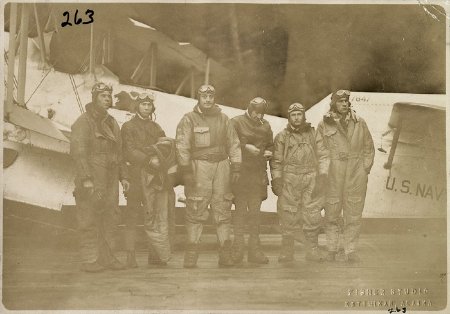Description:
U.S. Navy Fliers Search for Lost Plane
On October 11, 1930, a plane carrying Canadian pilot Paddy Burke and two companions disappeared in Northern British Columbia. Two weeks later, Pat Renehan, a pilot for Alaska-Washington Airways, flew north from Seattle to join in the search for the missing plane. After landing in Butedale, British Columbia to refuel, Renehan, his mechanic Frank Hatcher, and passenger Sam Clerf took off for Ketchikan. They never arrived.
While the search for Burke went on in the north, a new search based in Ketchikan was launched for Renehan and his companions. Civilian aircraft, the Coast Guard Cutter Cygan, and Canadian boats combed the route believed to have been taken by the lost plane without success.
After two weeks, the U.S. Navy sent two amphibious aircraft (Loening OL8-As) and a tender to Ketchikan to search for Renehan. These Navy fliers were selected in part because they were familiar with the terrain in Southeast Alaska, having been based in Ketchikan the year before as part of an aerial mapping expedition. Naval personnel included (left to right): 2nd Pilot L. P. Moragne, Radioman L. E. Geselel, Lieutenant-in-command C. F. Greber, Chief Radio Electrician Claude Alexander, Pilot S. T. Pigot, and Radioman R. F. Scott.
On December 4th, the search for Renehan was abandoned. One week later, two survivors from Paddy Burke's plane, barely alive, were rescued in the Yukon Territory. Small traces believed to be from Renehan's plane were found near Point Davidson on Annette Island.
Ketchikan Museums: Tongass Historical Society Collection, THS 61.8.1.263

